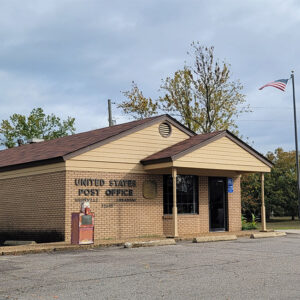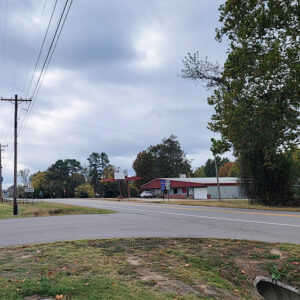calsfoundation@cals.org
Knoxville (Johnson County)
| Latitude and Longitude: | 35°22’55″N 093°21’52″W |
| Elevation: | 390 feet |
| Area: | 3.18 square miles (2020 Census) |
| Population: | 660 (2020 Census) |
| Incorporation Date: | January 5, 1962 |
Historical Population as per the U.S. Census:
| 1810 | 1820 | 1830 | 1840 | 1850 | 1860 | 1870 | 1880 | 1890 | 1900 |
| – | – | – | – | – | – | – | – | – | – |
| 1910 | 1920 | 1930 | 1940 | 1950 | 1960 | 1970 | 1980 | 1990 | 2000 |
| – | – | – | – | – | – | 202 | 264 | 239 | 511 |
| 2010 | 2020 | ||||||||
| 731 | 660 |
Knoxville is a city in southeastern Johnson County, close to Lake Dardanelle. Originally developed as a railroad town, Knoxville is crossed by both U.S. Highway 64 and Interstate 40.
The Arkansas River Valley has long been inhabited, as can be seen by rock art that still exists in Johnson County. The Osage claimed the area as hunting territory at the time of the Louisiana Purchase, and a treaty later gave the land to the Cherokee for a few years, until a subsequent treaty moved them farther west. The first white man to own the land on which Knoxville would be established was Thomas May, who has been described as Arkansas’s first millionaire. May owned nearly 800 acres of bottomland in Johnson County, on which he established a town he called Mayville. Records from 1850 indicate that May owned fourteen slaves and that his land produced corn, wheat, oats, potatoes, cotton, and hay. He also owned a sawmill, a lumberyard, a general store, a hardware store, and an ice plant.
After the Civil War, the Little Rock and Fort Smith Railroad was chartered and began building a line on the north side of the Arkansas River. By 1873, the line had already been completed from North Little Rock (Pulaski County) to Clarksville (Johnson County), and the line was finished to Fort Smith (Sebastian County) by 1874. A depot was built on May’s land, and a post office opened in 1873 that was called Black Fox. W. D. Epperson ran the depot and post office, as well as a small store. Four years later, M. H. Hobbs purchased eighty acres from May, bought out Epperson’s business, and platted a town he named Knoxville for the Tennessee city. Homes and businesses were erected. A Baptist church was built in 1880; when a tornado leveled the building in 1884, a new Baptist church was built on a new site. A Methodist church was built in 1883.
Among the businesses established in the new town were a thirty-saw gin, a horse-powered gin (later moved and converted to steam power), and a sawmill. The Methodists built a new building and sold their old church building to the school board. Around 1913, a new five-room school was built. The Baptist church burned down just before Christmas in 1923, and a new church was built on the same site the next year. Many other businesses and one house were destroyed by the same fire. By 1932, the town had three stores, owned by Hobbs, by J. E. Thicksten, and by L. E. Atwell. By this time, the Little Rock and Fort Smith Railroad had become part of the Missouri Pacific system.
During the first part of the twentieth century, both cotton and fruit—including apples, peaches, and pears—were grown in the Knoxville area. The timber industry also harvested trees that were shipped by railroad. All of these industries peaked before the Depression and then declined. Highway travel was also diminishing the railroad’s importance. Population fell and schools were consolidated. In the second half of the century, two construction projects reversed the downward trend. First, a dam across the Arkansas River created Lake Dardanelle in 1965, attracting fishers and other tourists to the area. Second, Interstate 40 was built along roughly the same path as the rail line, increasing traffic through the area.
Businesses in Knoxville as of 2010 included manufacturing, stone, concrete, steel, and natural gas establishments. There are two flea markets, two boat companies, a trucking outfit, and a ceramics store, as well as restaurants and a country store. The Methodist congregation has disbanded, but the Baptist church remains. Knoxville Elementary School, once part of the Lamar (Johnson County) school district, is closed. The population of Knoxville was 731 in 2010.
For additional information:
Head, June. “Knoxville Founded in 1877; Builds Despite Many Fires.” Johnson County Historical Society Journal 12 (October 1986): 14–15.
Langford, Ella Molloy. Johnson County, Arkansas: The First Hundred Years. Clarksville, AR: Sallis, Threadgill, & Sallis, 1921.
Steven Teske
Butler Center for Arkansas Studies
 Johnson County Map
Johnson County Map  Knoxvile School
Knoxvile School  Knoxville Post Office
Knoxville Post Office  Knoxville Street Scene
Knoxville Street Scene 




Comments
No comments on this entry yet.